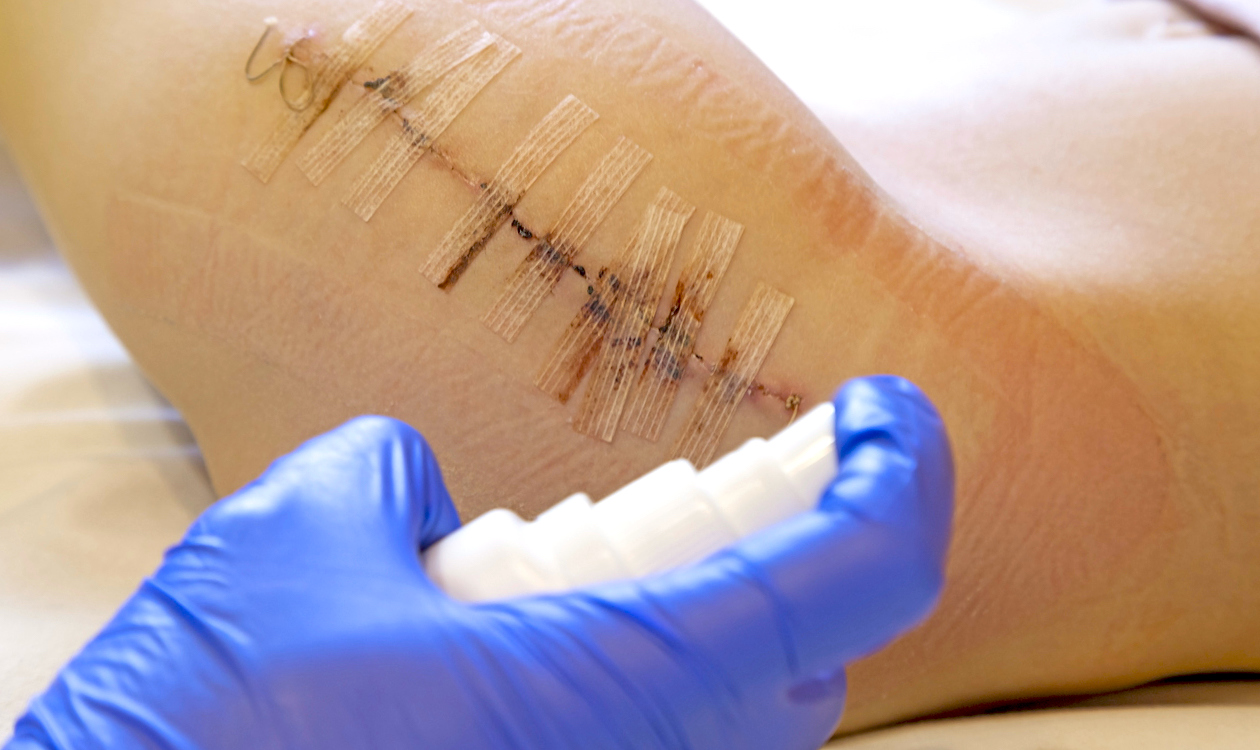Last year, about 6.5 million Americans suffered from chronic wounds that were difficult to heal. These types of wounds can cause excruciating pain, trauma, and contribute to a negative quality of life. Chronic wounds could either be a result of injuries, diabetes, surgeries, or other underlying conditions. While traditional wound treatments involving oral antibiotics seemed to be the norm, they often presented a higher risk of recurrence, antibiotic resistance, and causing further medical problems by harming one’s kidneys and/or the good bacteria in their stomach too.
However, recent developments in transdermal drug delivery technologies offer a safer and more effective way to treat and heal acute to chronic wounds. This article will explore how transdermal drug delivery innovations such as one of the strongest topical antibiotics in the world, Vitastem Ultra, benefit treating and healing patient wounds more effectively than oral antibiotics.
1. What is Transdermal Drug Delivery?
Transdermal drug delivery (TDD) involves the process of delivering medicine or drugs through the skin’s surface by using a spray, patches, gels, or creams. It is an effective way to administer medication, especially for those who are unable to take drugs orally. Transdermal medications are absorbed directly into the bloodstream through the skin’s pores, providing a quick delivery of medicine to the target areas.
2. How Transdermal Technology Benefits Wound Treatment and Healing
Transdermal patches, for example, can be used to administer antibiotics to chronic wounds directly, allowing patients to access the medicine they need without the risk of digestive problems. Transdermal patches may help avoid problems associated with oral antibiotics, such as the risk of creating antibiotic resistance or GI issues. They are also a safe alternative for patients with various digestive issues, such as Crohn’s disease, irritable bowel syndrome, or malabsorption disorders. Transdermal drug delivery for wound healing is also convenient and easy to use, allowing patients to change patches and control dosage easily. It’s a non-invasive way of treating patients, where they can carry on with their daily activities with little to no discomfort. Aside from a TDD patch, new & innovative treatments like Vitastem Ultra come in a topical antibiotic spray that can be sprayed and rubbed on 1 to 3x daily for maximum healing benefits.
3. Anti-inflammatory Agents and Growth Hormones
Transdermal delivery is advantageous to patients because it provides a controlled dose. In wound treatments, a patient can receive a controlled dose of anti-inflammatory agents that can reduce inflammation and eliminate pain. Moreover, transdermal drug delivery methods may work well with growth hormones that stimulate the growth of cells in healing chronic wounds. The body naturally produces hormones that promote skin rejuvenation, and administering a controlled amount through transdermal drug delivery could help aid the healing process. Wound dressings can also be infused with growth factors such as platelet-derived growth factors (PDGF) to enhance the wound healing process.
4. Reducing Infection Rates
Since transdermal drug delivery provides medicine directly to the wounds, it reduces the risk of colonization or infection of medication-resistant microorganisms in the GI tract. In particular, transdermal antibiotic delivery has been successful in reducing wound colonization and preventing infections. This was observed in a study conducted in a hospital setting, where risk of untoward effects associated with other routes of administration such as diarrhea, nausea and vomiting were reduced. In addition to these, HAIs like staph & MRSA infections can be drastically reduced with widespread adoption and usage of topical antibiotics like Vitastem Ultra to treat wounds and prevent infections.
5. A Natural Approach
Transdermal drug delivery methods are based on natural and safe substances found in our skin. It is therefore a gentle and effective approach to healing chronic wounds that have become difficult to treat. Transdermal drug delivery also eliminates the need for invasive methods of drug administration such as oral antibiotics, intravenous injections, or surgeries.
The Bottom Line on Innovative TDD for Wound Care…
Chronic wounds are debilitating, and patients are often left with limited options for effective treatment. With recent developments and innovative transdermal drug delivery methods as seen in topical antibiotics like Vitastem Ultra, which is manufactured by parent company ViaDerma, there is hope for patients seeking safer and more effective means of treating wounds.
Transdermal drug delivery technologies offer a natural, easy-to-use, and concentrated approach that could reduce the risks posed by traditional oral antibiotic treatments. In addition, transdermal drug delivery could prove to be useful for patients with digestive issues or those who have exhausted conventional treatment options. It is a leap forward in wound care, and as technology advances, it may open doors to even more healing alternatives.
Keep an eye on ViaDerma, a promising specialty pharmaceutical company developing & licensing broad-spectrum antibiotics for wound care and a variety of infectious skin diseases too. Their innovative and patent-pending dual carrier transdermal drug delivery technology can transform oral medications into topical ointments like their lead product Vitastem Ultra and deliver rapid results to the desired site of action – 10x more effectively than other antibiotics available to patients in the market currently.

